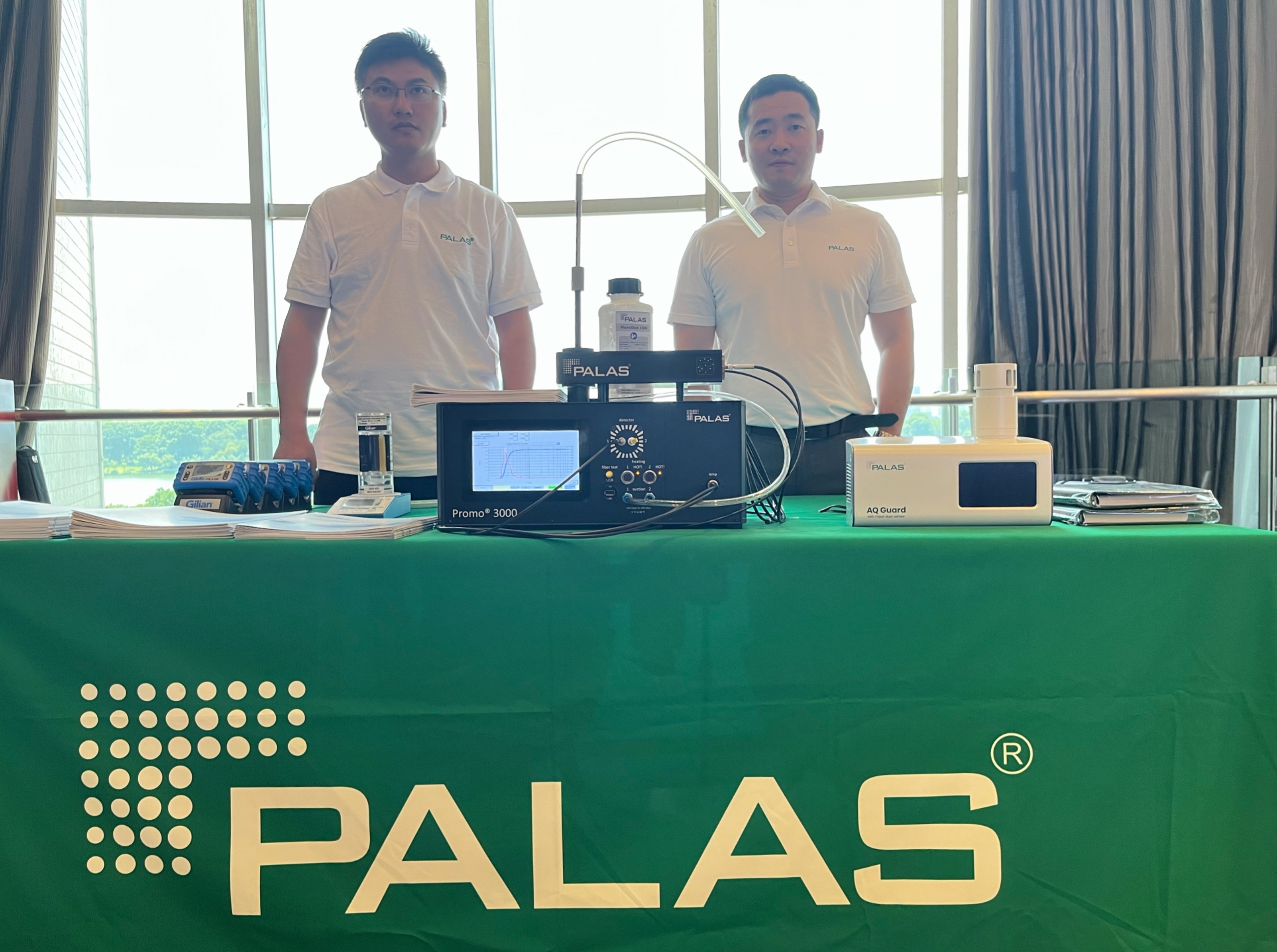Researchers paid more attention to biosecurity and public health due to the epidemic and the crucial role of aerosols in disease transmission. Palas® Promo® 3000 aerosol spectrometer is designed for particle size analysis to help explore the impact of aerosol. On May 27, 2023, Nanjing, hosted the 8th seminar on Aerobiology and Environmental Health and Safety. The event discussed the importance of aerosol characteristics and transmission modes in disease prevention and control. Palas® had the privilege of engaging in a high-level dialogue, sharing advanced aerosol monitoring technologies and equipment.
The forum was hosted by the Sub-Technical Committee of Particle Characterization including Sieving Other Sizing Methods and Sieves, and co-hosted by multiple companies. The conference invited 20 experts to give special reports on aerobiology, transmission traceability of new crown virus, and several related topics. They engaged in in-depth discussions and exchanges with the attendees.The forum gained a total of nearly 200 participants.


Impact of aerosol particles on disease transmission
Palas® experts shared that aerosols are often dispersed and suspended in gas media in the form of solid or liquid particles. Viruses, bacteria, and microorganisms can attach to these aerosol particles and remain active for some time. The lower the temperature the longer they can survive. Studies have shown that the smaller the particle size of aerosols, the greater the possibility of forming pathogenic aerosols. And aerosol particles smaller than 5 μm can reach the lungs and have irrecoverable impacts on human health.
Therefore, measuring the size distribution of aerosol particles containing pathogenic microorganisms is the primary way to study aerosol-borne diseases. Then we can understand the spread and diffusion of these microorganisms. Palas® Promo® 3000 can determine the transmission routes and velocities of pathogenic microorganisms by monitoring the size distribution. This provides a scientific basis for effective disease prevention and control strategies. Palas® experts explained the principle and application of the Promo® 3000 in detail at the seminar, which attracted a lot of attention.

Spectrometer solves measurement problems
The Promo® 3000 aerosol particle size spectrometer is characterized by its accurate particle size measurement (within +/-5% of particle size measurement error), wide particle size measurement range of 0.2um~100um, and good count repeat (typically less than 0.5%). Up to four measuring ranges in only one device. It can be used to monitor other harmful gases in the air, such as PM2.5, PM10, etc., to explore the effects of air pollutants on human health. Thus, Promo® 3000 can help researchers achieve accurate measurements of aerosol particles in the air. And then they can further understand how diseases are transmitted and help better prevent and control epidemics.
Palas® experts further demonstrated the operation and application of the Promo® 3000 for the guests. A touch display ensures user-friendly operation. Measurements can be started easily, and all data can be evaluated and displayed in real-time. The unit also comes with PDAnalyze analysis software, which makes it easy to quickly analyze airborne particle levels and sizes. Your operating costs can be reduced as well.

Aerosol particle monitoring is closely related to our lives and health safety, and air biology is becoming increasingly important. To better respond to potential future outbreaks, conduct virus transmission tracing, analyze aerosol airborne transmission, and more, Palas® will continue to enhance aerosol particle monitoring technology. We strive to provide a reliable force for relevant research and public health, contributing to the academic study of air biology and environmental health and safety in China.
Promo® 3000 Aerosol Spectrometer

Advantages
· Measuring range of 0.2 to 100 µm (4 measuring ranges selectable in one device)
· Up to four measuring ranges in only one device:
– 0,2 µm – 10 µm
– 0,3 µm – 17 µm
– 0,6 µm – 40 µm
– 2 µm – 100 µm (additionally for sensors 2300 and 2500)
· Up to 128 size channels per measuring range
· Concentration range of 1 particle/cm3 to 106particles/cm3
· Calibration curves for different refractive indices
· Very high and reproducible counting efficiency rate starting at 0.2 µm
· Optical fiber technology
· Simple operation with a large touch display
· Calibration, cleaning, and lamp replacement can all be performed independently by the customer
· External control by RS 232 or Ethernet
· With analysis software PDAnalyze
· Optional: Software PDControl for operation as Welas® Digital available
· Low maintenance
· Reliable function
· Reduces your operating expenses
Applications
· Emission monitoring of installations
· Control of grinding and classification processes
· Monitoring of production processes in the food, pharmaceutical, and chemicals industries
· Testing of complete filters, inertial and wet separators, or electrostatic precipitators

